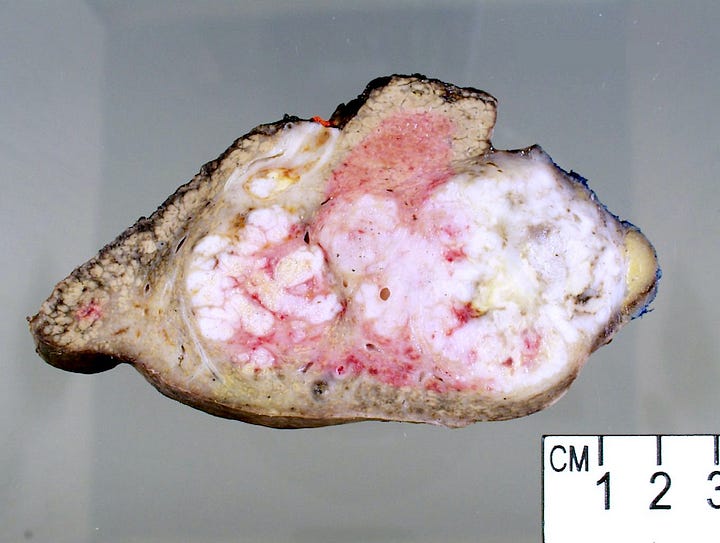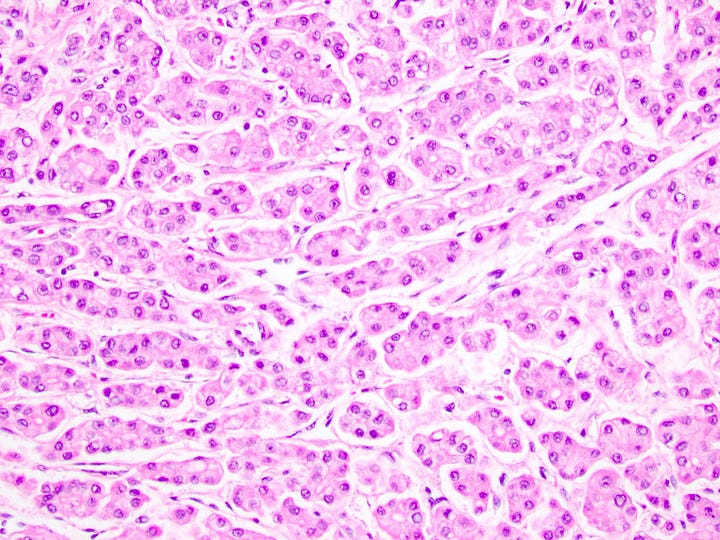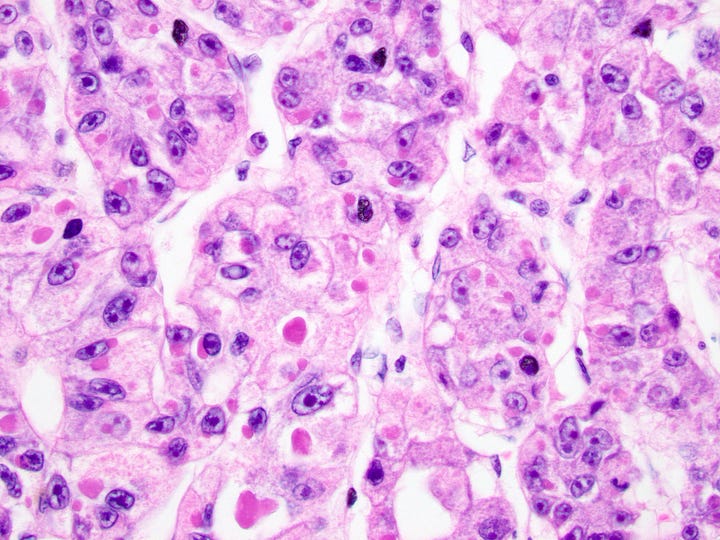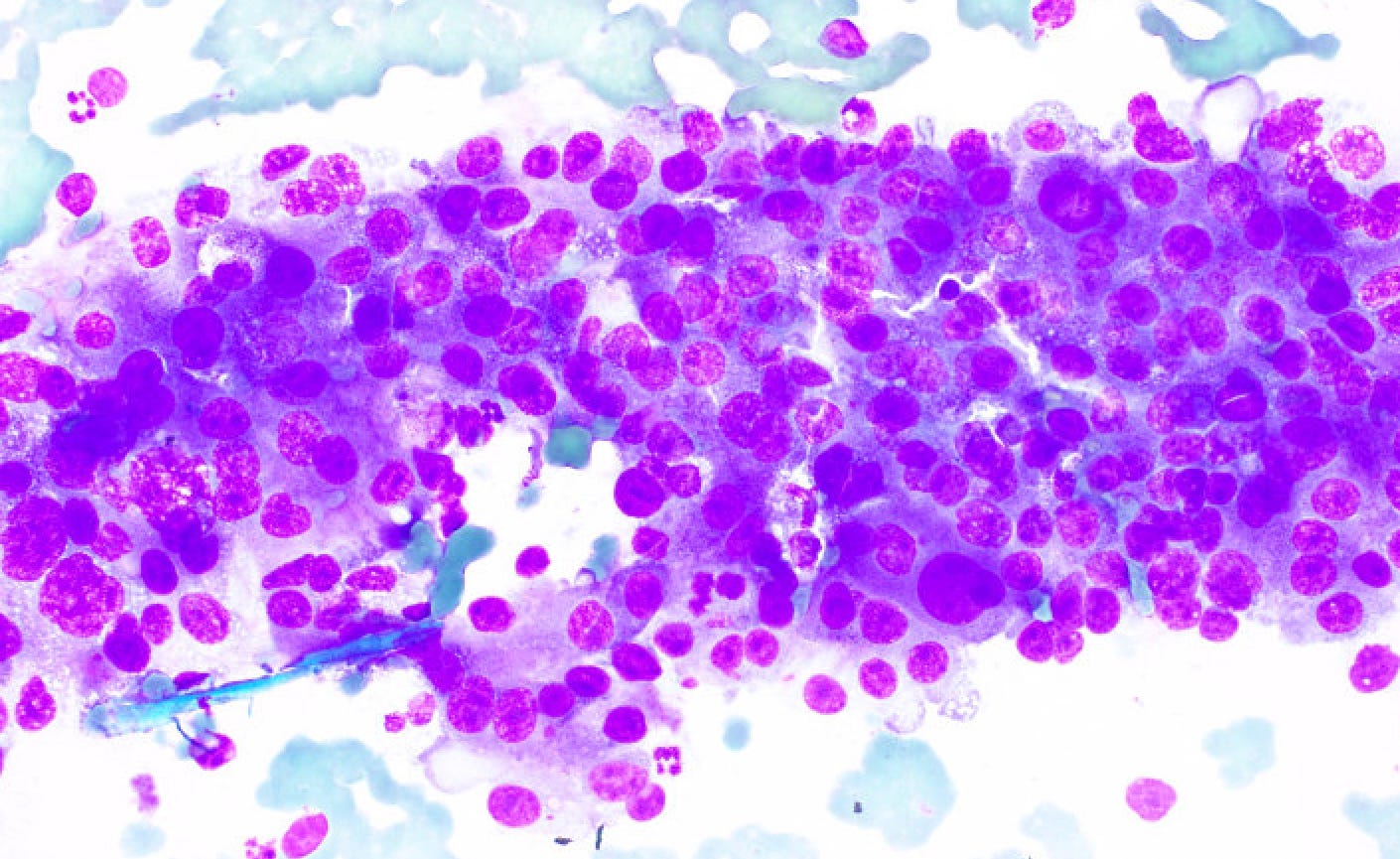

Liver cancer combined with intrahepatic bile duct cancer is the #6 cause of cancer death in the U.S. (after lung, colon, pancreas, breast and prostate cancer), with 29,380 deaths projected in 2023 (19,000 in men, 10,380 in women).
Many famous people have died of liver cancer, including musician Gregg Allman (attributed to a dirty tattoo needle and Hepatitis C) and comedian Flip Wilson (cause unknown).
Liver cancer typically refers to primary liver cancers, i.e. cancers that originate in the liver and resemble liver cells. About 80% of primary liver cancers are liver cell cancer (hepatocellular carcinoma). The rest are usually cancer of the intrahepatic bile ducts (cholangiocarcinoma).
Other cancers of the liver include metastases (i.e. cancers that originate elsewhere but spread to the liver) and cancers of nonliver cells that reside in the liver, including blood vessels (angiosarcoma) and lymphocytes (lymphoma).
Many adult cancers have a good prognosis (5 year survival), but not liver cancer. The 5 year relative survival for liver cancer has improved from 3% in 1975-77 but was still only 21% in 2012-2018 (note: statistics vary slightly between different sources):
Top 10 causes of US cancer death in 2022 and 5 year relative survival, source
#1 Lung cancer, 130,180 deaths, 5 year survival 22%
#2 Colon cancer, 52,580 deaths, 5 year survival 65%
#3 Pancreatic cancer, 49,830 deaths, 5 year survival 11%
#4 Breast cancer, 43,780 deaths, 5 year survival 90%
#5 Prostate cancer, 34,500 deaths, 5 year survival 98%
#6 Liver cancer, 30,520 deaths, 5 year survival 20%
#7 Non Hodgkin lymphoma, 20,250 deaths, 5 year survival 73%
#8 Central nervous system (brain) cancer, 18,280 deaths, 5 year survival 33%
#9 Bladder cancer, 17,100 deaths, 5 year survival 77%
#10 Esophageal cancer, 16,410 deaths, 5 year survival 20%
At least 70% of liver cancers in the US could potentially be prevented through the elimination of risk factors (e.g. by following the American Code Against Cancer), many of which cause chronic liver disease and cirrhosis:
Excess body weight (BMI > 25)
Hepatitis B virus (HBV) infection
Hepatitis C virus (HCV) infection
Smoking
Heavy alcohol consumption (three or more drinks per day), which causes nonalcoholic fatty liver disease and eventually cirrhosis.
Type 2 diabetes
A rare risk factor is eating food contaminated with aflatoxin (poison from a fungus that can grow on improperly stored foods, such as nuts and grains).
Prevention activities, other than behavioral changes for the above, include:
HBV vaccine, one of two vaccines that prevent cancer (also HPV vaccine).
Testing for hepatitis C virus (HCV). Although there is no vaccine, there is effective treatment.
Treatment options include:
Surgical resection if a solitary tumor is present.
Liver transplantation
Ablation therapy (destroying the tumor through radiofrequency, microwave, cryoablation or ethanol injection).
Transarterial embolization and transarterial chemoembolization (clotting off or injecting chemotherapy into arteries feeding the tumor).
Targeted therapy (drugs that target mutations or other abnormal molecular processes in the cancer).
However, even if the disease is localized (43% of patients), the 5 year survival is still only 36%.
Images of liver cell cancer (hepatocellular carcinoma):



Microscopic images:



If you like these free essays, please share them with others.
Follow me on Substack or LinkedIn or through our Curing Cancer Newsletter (all are free).
Follow our Curing Cancer Network on LinkedIn and Twitter to view interesting images of cancer diagnoses, cancer essays and other cancer news.
Latest versions of our cancer essays:
American Code Against Cancer (how you can prevent cancer)
Email me at Nat@PathologyOutlines.com - Unfortunately, I cannot provide medical advice.
I also publish Notes at https://substack.com/note. Subscribers will automatically see my notes.
Other social media - Tribel: @nat385440b, Threads: npernickmich



